Review: 2012 Ford Focus SE Take Two (With Sport Package)
As recounted in an earlier review, the new Focus in Titanium trim is good enough to justify a price tag over $27,000 for a compact Ford. But what if you don’t want to spend that much, or want a manual transmission, which is not available with the SEL or Titanium trim levels? How much do you give up with the SE? I requested a $21,380 Focus SE hatchback with the Sport Package to find out.
With small cars, hatchbacks are often more attractive than their related sedans. To my eye, the Focus is an exception. With the hatch, the rear quarters appear scrunched and drawn out, with a bit too much going on. The oversized tail lamps don’t help. I also found myself wondering about a cutline below the tail lamp, before realizing that was someone’s overly clever way of locating the fuel filler door. The smaller Fiesta hatch is a cleaner, more attractive design. All of this said, current competitors are either less attractive, less stylish, or both. The Focus at least lacks the sort of deal-killing aesthetic flourishes found on the Mazda3. A possible exception: black wheels that attend the $495 17-inch tire upgrade. Easily fixed: don’t tick that box and go aftermarket (more on this later). Wheels make a big difference on either bodystyle: both sedan and hatch look much better with the Titanium’s optional five-spoke 18s than with the other, smaller rims on the menu.
Inside the SE loses the padded upper door panels and trades some of the Titanium’s titanium and “piano black” trim bits for more prosaic silver ones. I thought I’d miss these, and find the SE interior dreadfully cheap in comparison. But during the week I had the car I didn’t. Not one bit. Everything looks and feels solid and precise. The SE’s rugged black cloth with gray accents looks and feels both sporty and upscale. This is the way BMW used to do cloth back in the 1980s, before leather (or something that resembled it closely enough to fool the masses) became de rigeur in ultimate driving machines. Need more color inside the car? For $795 Ford will substitute red and black leather. With the sun out and outside temps in the mid-90s, I was happy the tested car lacked this option.
As noted in the earlier review, the instrument panel is quite large, its height and depth pushing the limits of what I consider a sufficiently open forward view. I once again cranked the seat up a few clicks to get a good view over it. You can’t get MyFord Touch on the SE. Instead, as in the Fiesta there’s a confusing, unconventional array of buttons to contend with for the audio and communications systems. I figured out the basics after a few days, but full use of the system requires either extensive, often frustrating trial and error or (horrors) a trip through the owner’s manual.
The Sport Package includes a leather-wrapped sport steering wheel and aggressively bolstered sport bucket seats. These are both comfortable and supportive. The headrests don’t jut too far forward to be obtrusive. The non-adjustable lumbar support fit my back well, but others will no doubt wish for a larger and/or higher bulge. At 5-9 and 160 pounds, I’m not a big guy, and had plenty of room in the front seat. Larger drivers might find the instrument panel and center console overly constricting. Perhaps the seat’s side bolsters as well–they were about perfect for me.
Ditto the back seat. I could very comfortably sit behind myself with an inch of air ahead of my knees, an inch over my head, and a high well-shaped cushion supporting my thighs. A six-footer would be more of a squeeze.
Cargo volume is typical of a compact hatch. The 60/40 second row seats fold to form a perfectly flat floor, but not easily. Instead:
1. Unless the front seat is already pretty far forward or upright, move it out of the way.
2. Tip the rear seat bottom forward.
3. Remove the rear seat headrest.
4. Fold the rear seatback.
5. Return the front seat at least part of the way to its original position. (The seat can no longer slide all the way back, but enough for drivers up to about six feet.)
I’m guessing that there was a choice between ease of use on one hand and a flat floor and full-sized rear seat on the other, and the latter priorities won out. It would help if the rear headrests folded like those on the Explorer, but this was likely ruled out for cost reasons.
Get the car moving, and the Focus SE instantly impresses as much as the Titanium did. This $20,000 Ford has the thoroughly refined slickness, solidity, quietness, and composure you used to have to buy a hyper-expensive German machine to get. This is evident during the first fifty feet, and remains impressive after a week in the car. Even over Michigan’s pockmarked streets the Focus rides well, with tightly controlled body motions. Some cars absorb bumps a little better, but they have the advantages of a longer wheelbase and wider track. A Chevrolet Cruze isn’t far off in overall refinement. But the Hyundai Elantra trails considerably, and the new-for-2012 Honda Civic is hopelessly far behind.
The usual downside of this level of refinement: curb weight. At 2,920 pounds the new Focus has plenty of it (though still about 200 pounds less than a Cruze). One impact: even a strong, smooth 2.0-liter engine like the direct-injected, 160-horsepower, 146-foot-pounds unit employed here isn’t going to generate gut-wrenching acceleration. Don’t slip the clutch a bit off the line, and the first few seconds turning onto a busy road can seem to take forever. Especially if the AC is on. At other times performance is easily adequate, but well short of thrilling.
A sixth cog would help. The five-speed manual is geared to provide grunt off the line and economy on the highway, so the ratios are spread a little too widely for an engine with a 4,450 rpm torque peak. On the other hand, operating the shifter and clutch couldn’t be easier. Throw length and effort are both moderate, and their feel is as thoroughly refined as the rest of the car. One contributor: a fairly heavy flywheel that blunts some of the potential of the engine.
An upcoming Focus ST with a 247-horsepower turbocharged four and a six-speed manual should cure these performance ills, and then some, at the cost of, well, a higher cost. For those who want more than 160 horsepower, but who don’t need or want to pay for license-threatening looks and speed, Ford should consider offering a naturally-aspirated 2.5-liter four with roughly 200 horsepower. This would hit a sweet spot.
The 2.0-liter engine is economical, especially considering the weight of the car. The EPA estimates 26 city / 36 highway. The trip computer reported low 30s in suburban driving with the AC on high.
The Sport Package does not alter the suspension tuning, which is currently “sport tuned” for all trim levels (per Q&A with Ford). Handling is very good, but again short of thrilling. The steering, while well-weighted and generally better than most buyers will be used to, could feel sharper, more precise, and more nuanced. The Mazda3 retains a clear edge in this area, and even the previous Ford Focus felt more direct. Partly this is the cost of refinement, but also that of an economy-maximizing full electric system instead of the electro-hydraulic hybrid employed by Mazda. The Focus SE’s chassis will do just about everything you ask of it well (except feel light on its feet), with sharp turn-in, minimal understeer (partly due to electronic wizardry involving the brakes), good communication, and excellent composure—until you approach the outside front tire’s limits. Then things get a bit mushy, if very safe.
Step up to the Titanium, and an extra $595 for the Handling Package gets you moderately firmer struts and 235/WR18 Michelin Pilot Sport3s that grip harder and feel sharper in aggressive driving. Or just do as suggested earlier: don’t spend $495 on the factory’s 17-inch Contis, and go aftermarket.
As mentioned in the intro, the tested car lists for $21,380, while the equivalent sedan lists for $20,780. You can save $495 by doing without the 17-inch wheels and tires, but in this case you’ll definitely want to spend considerably more on an aftermarket set. You could also save $800 by doing without the SYNC system’s USB and Bluetooth connectivity and satellite radio, but you won’t unless you’re still living in the twentieth century.
Similarly equip a 2011 Mazda3s hatchback, and it’s a $110 less. Adjusting for remaining feature differences using TrueDelta’s car price comparison tool finds the two are nearly even. So the decision between these two isn’t going to be based on price. Rather, on refinement and fuel economy (the Mazda is rated only 21/29) vs. acceleration and steering feel. For most people the Ford will easily win this match-up.
A Kia Forte5 SX is the budget buy in the segment, with a list price of $19,090. With a larger engine, it’s quicker than the Focus, and has a longer warranty, but is less economical (22/32) and far less refined in just about every way (materials, powertrain, ride, handling). Features are about even here as well. Is it worth saving $2,000 to get a car that looks and feels $5,000 less expensive?
To get the premium look and feel of the Focus in a semi-affordable car, it’s necessary to go with a Volkswagen Golf—and even the not-yet-decontented VW hatchback isn’t at the same level as the Ford. You also cannot get the sporty look and feel of the Focus SE Sport without stepping up to the much more expensive (and much quicker) GTI. Compare a base 2011 Golf with Bluetooth to a Focus SE with SYNC but without the Sport Package and 17s, and the VW is about $400 more. So close to both the Focus and the Mazda3, but without their sportiness.
The 2012 Ford Focus isn’t a hooner’s delight right out of the box, but I’m nevertheless amazed by just how good it is. Even in SE trim it has the look, feel, and refinement of a much more expensive car. And it drives better than 90 percent of the population will ever expect it to. So, if you simply want a really good, nicely trimmed compact car, but don’t want to spend $27,000+ for it, $21,000 or so (before dealer discounts and taxes) will do the trick.
Ford provided the vehicle, insurance and one tank of gas for this review.
Michael Karesh operates TrueDelta, an online source of automotive pricing and reliability data.
Michael Karesh lives in West Bloomfield, Michigan, with his wife and three children. In 2003 he received a Ph.D. from the University of Chicago. While in Chicago he worked at the National Opinion Research Center, a leader in the field of survey research. For his doctoral thesis, he spent a year-and-a-half inside an automaker studying how and how well it understood consumers when developing new products. While pursuing the degree he taught consumer behavior and product development at Oakland University. Since 1999, he has contributed auto reviews to Epinions, where he is currently one of two people in charge of the autos section. Since earning the degree he has continued to care for his children (school, gymnastics, tae-kwan-do...) and write reviews for Epinions and, more recently, The Truth About Cars while developing TrueDelta, a vehicle reliability and price comparison site.
More by Michael Karesh
Latest Car Reviews
Read moreLatest Product Reviews
Read moreRecent Comments
- Ltcmgm78 It depends on whether or not the union is a help or a hindrance to the manufacturer and workers. A union isn't needed if the manufacturer takes care of its workers.
- Honda1 Unions were needed back in the early days, not needed know. There are plenty of rules and regulations and government agencies that keep companies in line. It's just a money grad and nothing more. Fain is a punk!
- 1995 SC If the necessary number of employees vote to unionize then yes, they should be unionized. That's how it works.
- Sobhuza Trooper That Dave Thomas fella sounds like the kind of twit who is oh-so-quick to tell us how easy and fun the bus is for any and all of your personal transportation needs. The time to get to and from the bus stop is never a concern. The time waiting for the bus is never a concern. The time waiting for a connection (if there is one) is never a concern. The weather is never a concern. Whatever you might be carrying or intend to purchase is never a concern. Nope, Boo Cars! Yeah Buses! Buses rule!Needless to say, these twits don't actual take the damn bus.
- MaintenanceCosts Nobody here seems to acknowledge that there are multiple use cases for cars.Some people spend all their time driving all over the country and need every mile and minute of time savings. ICE cars are better for them right now.Some people only drive locally and fly when they travel. For them, there's probably a range number that works, and they don't really need more. For the uses for which we use our EV, that would be around 150 miles. The other thing about a low range requirement is it can make 120V charging viable. If you don't drive more than an average of about 40 miles/day, you can probably get enough electrons through a wall outlet. We spent over two years charging our Bolt only through 120V, while our house was getting rebuilt, and never had an issue.Those are extremes. There are all sorts of use cases in between, which probably represent the majority of drivers. For some users, what's needed is more range. But I think for most users, what's needed is better charging. Retrofit apartment garages like Tim's with 240V outlets at every spot. Install more L3 chargers in supermarket parking lots and alongside gas stations. Make chargers that work like Tesla Superchargers as ubiquitous as gas stations, and EV charging will not be an issue for most users.

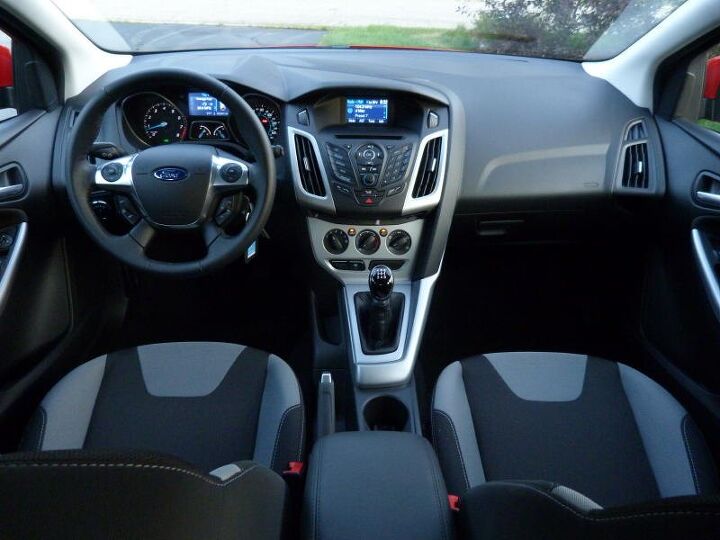























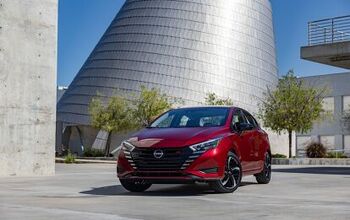





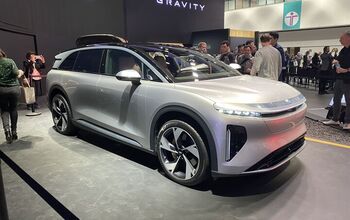
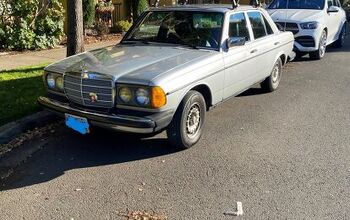

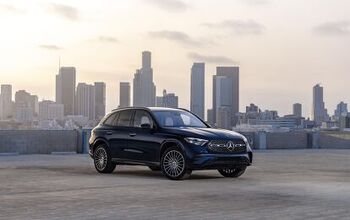

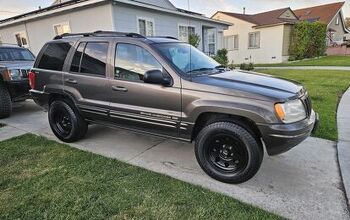
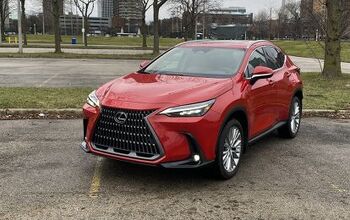
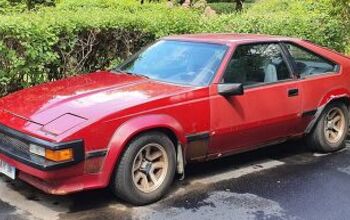
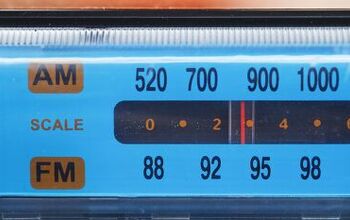
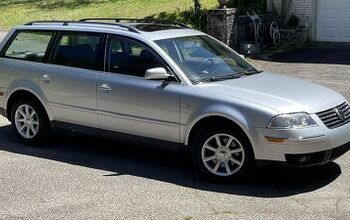
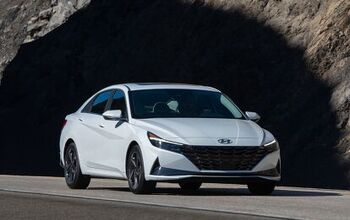
Comments
Join the conversation
The good, the bad and the Horrible. History, Previous car, 09 G6, GXP, 270 hp, b4 that, 01, Audi A6, b4 that, 01, GTI, 1.8, chipped and fast, b4 that, 2000 Eclipse..... I have had the 2012 Focus SE for 6 months now,and have driven 6600 painful miles. First the good, I like the look and style of the car. Now for the bad...It took 6k moles to get even close to the claimed milage. For the first 5500 miles I averaged low 20's combined. Now I get highway average in the upper 30's to 40, with combined being around 35. This car is very choppy riding, uncomfortable seats, painful on trips over 30 minutes. The base of the front seat, inside the bolstering is like 14 inches, and my back side, well, lets say i am just too big for this car and I am only 5'5"....but slightly over weight. The bolstering on the seat cushion cuts across my left thigh and requires frequent chiro visits. Also at 5'5, I need to move the seat back to within an inch of the rear seat, making the rear seat not usable. Even with short legs, seat moved back, the telescoping wheel does not extend far enough out to allow for a comfortable driving position. The transmission is outright strange. Feels like driving a standard with a bad clutch, like it cant find the right gear, no matter how you feather the throttle. The 'tech', sync, is horribly over complicated and not convienient at all. The stock radio just does not sound good at all. My wife calls this car the hamster ball, an although I am too proud to admit it, I actually agree wih her one just this one thing. I would kill for a Kia Rio 5 right about now....yes I drove that too, but if you are familier with financing rules you will understand why the dealer said I needed a more expensive car to cover my previous negative equity....I just needed better fuel economy because the G6 was a gas hog and fuel prices are REDICULOUS NOW. As soon as I get credit in order I will be dropping this car like a hot coal.....and I really want to love it but it is litteraly a P.I.T.A Peace to all. (there is a little TECHNOVIKING in all of us.)
Hey Micheal, (or anybody else who has bought the car) How did it perform in the rain? And how were the wipers? I don't know why, but wipers have always been super important to me. Lol